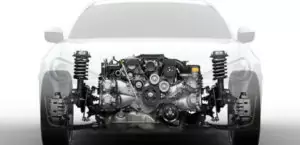The 1.3-liter injection engine Volkswagen NZ was produced from 1985 to 1994 and was installed on the most popular models of the concern of its time: Golf, Jetta and Polo. This power unit was primarily distinguished by the presence of a Digijet injection control system.
The EA111-1.3 series includes: MH, NZ.
Specifications
| Production years | 1985-1994 |
| Displacement, cc | 1272 |
| Fuel system | injector |
| Power output, hp | 55 |
| Torque output, Nm | 96 |
| Cylinder block | cast iron R4 |
| Block head | aluminum 8v |
| Cylinder bore, mm | 75 |
| Piston stroke, mm | 72 |
| Compression ratio | 9.5 |
| Features | SOHC |
| Hydraulic lifters | yes |
| Timing drive | belt |
| Phase regulator | no |
| Turbocharging | no |
| Recommended engine oil | 5W-40 |
| Engine oil capacity, liter | 3.5 |
| Fuel type | petrol |
| Euro standards | EURO 1 |
| Fuel consumption, L/100 km (for VW Golf 2 1989) — city — highway — combined |
8.7 5.9 6.9 |
| Engine lifespan, km | ~300 000 |
The engine was installed on:
- Volkswagen Golf 2 (1G) in 1985 – 1992;
- Volkswagen Jetta 2 (1G) in 1985 – 1992;
- Volkswagen Polo 2 (80) in 1990 – 1994.
Disadvantages of the VW NZ engine
- This engine is structurally simple and reliable, and most of its breakdowns are due to old age.
- The most difficult thing you can face here is the repair of the Digijet control unit.
- The components of the ignition system and the coolant temperature sensor are also distinguished by a low resource.
- Periodically, the fuel pressure regulator and throttle assembly require attention.
- In winter, the crankcase ventilation system may freeze and squeeze oil through the dipstick.






